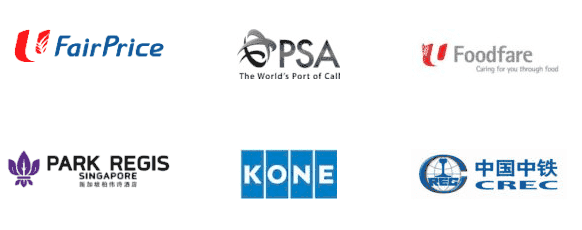Introduction: Embarking on the journey of incorporating a Singapore private limited company often brings forth fundamental questions regarding corporate structure. Entrepreneurs ponder over the legal nuances of corporations, seeking clarity on various aspects such as legal personality, company constitution, directorship, and shareholder roles. This detailed guide aims to demystify these concepts, serving as a roadmap for first-time incorporators in Singapore. Delve into the intricacies of Singapore company structures to lay a strong foundation for your entrepreneurial endeavors.
First time incorporator is advised to engage a top accounting firm in Singapore like AG Singapore to assist you in business registration.
Understanding the Legal Landscape
When delving into the realm of Singapore company registration, grasping the legal nature of corporations is paramount. A Singapore incorporated company embodies two distinct legal characteristics:
- Separate Legal Personality:
- A Singapore company exists as a separate legal entity from its members and managers.
- This distinction allows the company to enter contracts, incur obligations, and hold property in its own name, shielding its participants from personal liability.
- However, certain circumstances may pierce the corporate veil, holding both the company and its controllers liable in cases of fraud or wrongful intent.
- Legal Capacity:
- Companies possess full legal capacity to undertake business activities, enter contracts, and engage in transactions.
- While companies enjoy broad powers akin to natural persons, limitations on these powers can be defined by the company’s constitutional documents, namely the Memorandum and Articles of Association.
Navigating Corporate Operations
At the helm of corporate operations lie the directors, entrusted with steering the company’s course. Directors, often regarded as the “brain and nerve center” of the company, wield significant authority and responsibility. Their roles encompass:
- Managing the company’s affairs and operations, exercising fiduciary and ethical oversight.
- While directors’ duties are diverse, they primarily revolve around statutory obligations such as maintaining accounting records, convening shareholders’ meetings, and appointing auditors.
- Breach of directors’ duties, whether statutory or fiduciary, can lead to legal ramifications, including fines, injunctions, or civil remedies.
Empowering Shareholders
Shareholders play a pivotal role in the corporate landscape, representing the company’s ownership and wielding decision-making authority. Key aspects of shareholder roles include:
- Voting rights in matters such as director elections, resolutions, and capital reduction.
- Special privileges, including entitlement to dividends, participation in company meetings, and asset distribution during liquidation.
- While shareholders possess significant powers, their authority may be curtailed by the company’s constitution or applicable laws.

Unraveling Company Secretary Duties
A cornerstone of corporate governance, the company secretary occupies a central role in ensuring regulatory compliance and procedural adherence. Key responsibilities include:
- Maintaining company registers, organizing meetings, and filing requisite documents with regulatory authorities.
- Acting as a liaison between the company, its stakeholders, and regulatory bodies, ensuring seamless communication and adherence to statutory requirements.
- Upholding the integrity of corporate records, overseeing administrative tasks, and facilitating the smooth functioning of the company’s operations.
Crafting the Corporate Constitution
Central to the corporate framework are the Memorandum and Articles of Association, serving as the company’s constitutional documents. These documents delineate:
- The company’s identity, including its name, share capital, and subscriber details.
- Internal regulations governing the company’s management, shareholder rights, and operational procedures.
- The legal effect of the Memorandum and Articles of Association extends to binding the company and its members, outlining their respective rights, duties, and obligations.
Embracing Share Capital Dynamics
Shares represent the cornerstone of ownership in a company, providing investors with a stake in its fortunes. Key insights into share capital dynamics include:
- Shareholders’ entitlement to dividends, control rights, and participation in company affairs.
- Share capital contributions, representing funds or assets injected into the company by its members.
- The abolition of authorized capital requirements underscores Singapore’s flexible approach to share capital structures, allowing for minimum capitalization of SGD 1.
Understanding Directors’ Roles and Responsibilities
Directors serve as the driving force behind corporate decision-making, tasked with managing the company’s affairs and safeguarding its interests. Key facets of directors’ roles and responsibilities include:
- Strategic leadership and governance, overseeing the company’s operations and ensuring alignment with organizational objectives.
- Fiduciary duties, encompassing obligations of care, skill, and diligence in managing company affairs, as well as acting in the company’s best interests.
- Compliance and regulatory adherence, ensuring adherence to statutory requirements, financial reporting standards, and corporate governance principles.
- Liability and accountability, whereby directors may be held personally liable for breaches of duty, negligence, or misconduct.
Navigating Shareholders’ Rights and Privileges
Shareholders wield significant influence within the corporate framework, exercising rights and privileges that shape the company’s trajectory. Key elements of shareholders’ rights and privileges include:
- Voting rights in matters such as director elections, appointment of auditors, approval of financial statements, and amendments to the company’s constitution.
- Dividend entitlement, reflecting shareholders’ share of distributed profits or reserves allocated by the company.
- Pre-emption rights, granting existing shareholders the opportunity to maintain their proportionate ownership stake in the company by subscribing to new shares.
- Information rights, enabling shareholders to access relevant company information, attend general meetings, and scrutinize corporate affairs.
Unveiling the Role of Company Secretaries
Company secretaries play a vital role in ensuring corporate compliance, facilitating communication, and upholding procedural integrity within the organization. Key functions of company secretaries include:
- Regulatory compliance, ensuring adherence to statutory requirements, filing obligations, and corporate governance standards prescribed by regulatory authorities.
- Corporate administration, maintaining company registers, organizing board meetings, drafting minutes, and facilitating communication between stakeholders.
- Advisory services, offering guidance on corporate governance practices, regulatory changes, and procedural matters to directors, shareholders, and other stakeholders.
- Custodianship of corporate records, safeguarding important documents, including the company’s constitution, minutes of meetings, and statutory filings, ensuring accessibility and integrity.
Crafting the Company’s Memorandum and Articles of Association
The Memorandum and Articles of Association serve as the foundation of the company’s legal framework, delineating its identity, organizational structure, and operational guidelines. Key considerations in crafting these documents include:
- Company name and identity, reflecting the company’s branding, purpose, and business objectives, while adhering to regulatory requirements and availability checks.
- Share capital structure, specifying the authorized share capital, types of shares, rights and obligations attached to each class of shares, and procedures for issuance and transfer of shares.
- Corporate governance provisions, outlining the roles and responsibilities of directors, shareholders, and company officers, as well as procedures for conducting meetings, passing resolutions, and making amendments to the constitution.
- Regulatory compliance requirements, ensuring alignment with Singapore company law, accounting standards, and regulatory guidelines prescribed by authorities such as the Accounting and Corporate Regulatory Authority (ACRA).

Navigating Share Capital Dynamics
Share capital constitutes the financial backbone of the company, representing the funds or assets contributed by shareholders in exchange for ownership interests. Key aspects of share capital dynamics include:
- Authorized share capital, reflecting the maximum amount of share capital that the company is authorized to issue, as specified in its constitution.
- Issued share capital, representing the portion of authorized share capital that has been allocated and subscribed by shareholders, forming the company’s equity base.
- Paid-up share capital, denoting the portion of issued share capital for which shareholders have made full payment, contributing to the company’s capital reserves and financial stability.
- Share premium, representing the excess amount paid by shareholders for shares issued above their nominal or face value, providing additional capital resources for the company’s operations and growth initiatives.
Understanding the Concept of Limited Liability
Limited liability represents a foundational principle of corporate law, shielding directors, shareholders, and officers from personal liability for the company’s debts and obligations. Key elements of limited liability include:
- Legal separation between the company and its participants, whereby the company’s debts and liabilities are distinct from those of its shareholders, directors, and officers.
- Limited liability of shareholders, restricting their financial exposure to the amount invested in the company’s shares, thereby mitigating personal risk and preserving individual assets.
- Exceptions to limited liability, including instances of fraud, wrongful trading, or personal guarantees, where courts may pierce the corporate veil and hold individuals personally liable for company debts.
- Practical implications of limited liability, fostering investor confidence, facilitating business expansion, and promoting entrepreneurship by minimizing the risks associated with corporate ventures.
Navigating Directors’ Duties and Liabilities
Directors play a pivotal role in corporate governance, entrusted with managing the company’s affairs and safeguarding its interests. Key duties and liabilities of directors include:
- Fiduciary duties, encompassing obligations of loyalty, care, and diligence in managing company affairs, prioritizing the company’s interests over personal interests or conflicts of interest.
- Statutory duties, including obligations to maintain proper accounting records, convene shareholder meetings, prepare financial statements, and comply with regulatory requirements prescribed by authorities such as ACRA.
- Liability for breaches of duty, negligence, or misconduct, whereby directors may be held personally liable for losses incurred by the company or third parties as a result of their actions or omissions.
- Indemnification and insurance, offering directors protection against legal claims or liabilities arising from their duties, subject to statutory limitations and contractual arrangements with the company.
Navigating Shareholders’ Rights and Remedies
Shareholders wield significant influence within the corporate framework, exercising rights and remedies to protect their interests and hold corporate officers accountable. Key rights and remedies available to shareholders include:
- Voting rights, enabling shareholders to participate in corporate decision-making processes, including electing directors, approving resolutions, and making amendments to the company’s constitution.
- Information rights, allowing shareholders access to relevant company information, financial statements, and meeting minutes, facilitating transparency and accountability.
- Remedies for breach of duty, providing shareholders with legal recourse against directors, officers, or other shareholders for actions that harm the company or its shareholders’ interests.
- Derivative actions, empowering shareholders to pursue legal action on behalf of the company against directors or officers for breaches of duty, negligence, or misconduct, subject to court approval and statutory requirements.
Conclusion
In conclusion, mastering Singapore company structures entails a comprehensive understanding of legal frameworks, corporate roles, and operational dynamics. By navigating the intricacies of corporate governance, shareholders’ rights, and directors’ duties, entrepreneurs can establish robust entities poised for growth and resilience in the competitive business landscape. As Singapore continues to foster a conducive environment for entrepreneurship and innovation, leveraging the insights provided in this guide empowers entrepreneurs to navigate regulatory complexities, mitigate risks, and capitalize on emerging opportunities. With a solid foundation in corporate governance and compliance, entrepreneurs can embark on their entrepreneurial journey with confidence, driving sustainable growth and prosperity in the dynamic Singapore business ecosystem.
To facilitate your first time entrepreneurial journey, it is advisable to engage a top corporate service provider like AG Singapore to assist you in business registration , accounting services, audit services and others.














